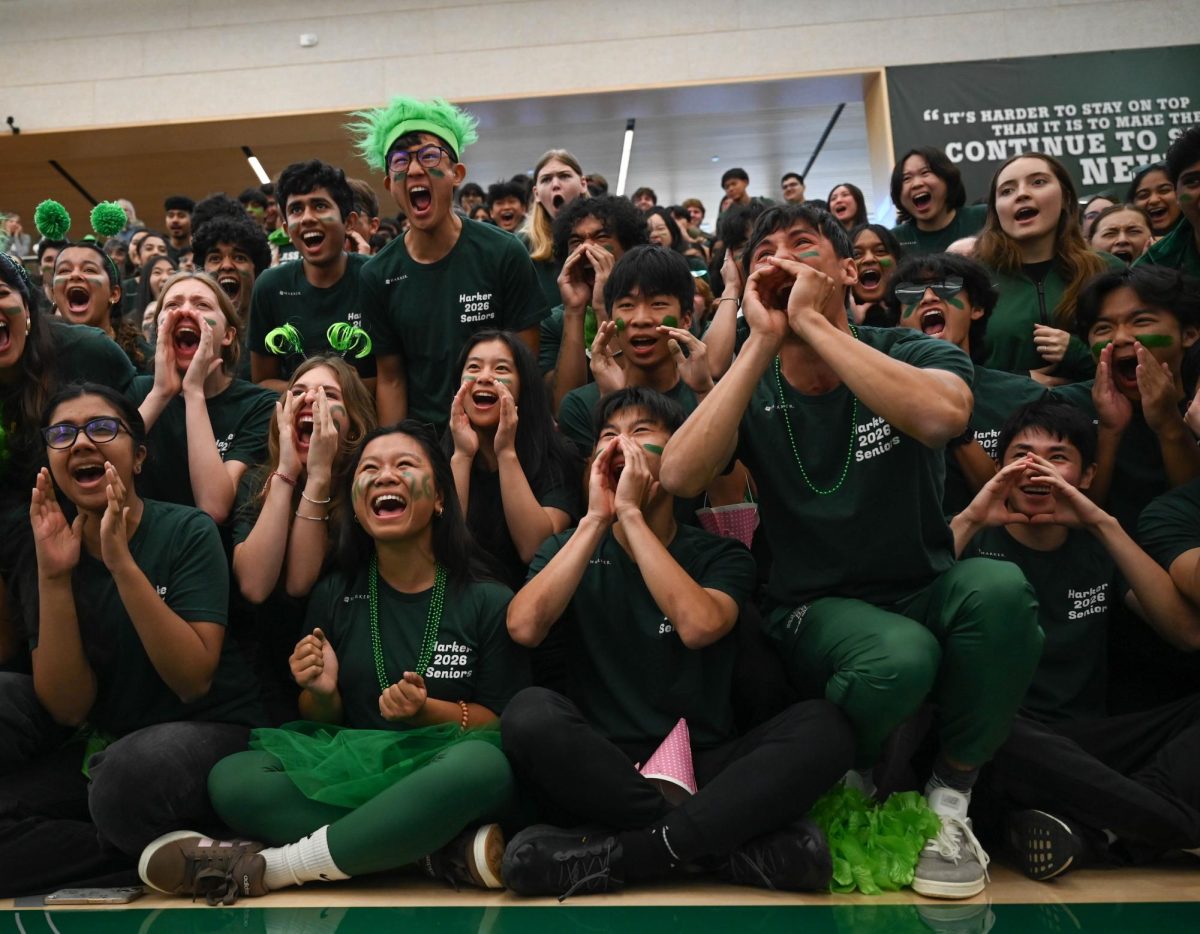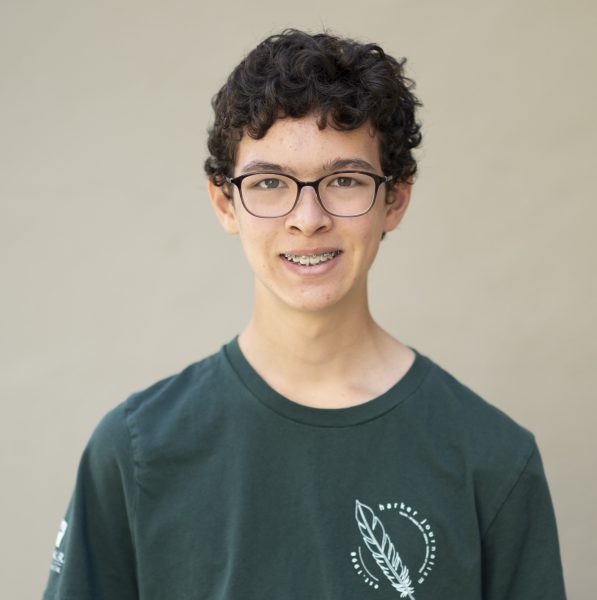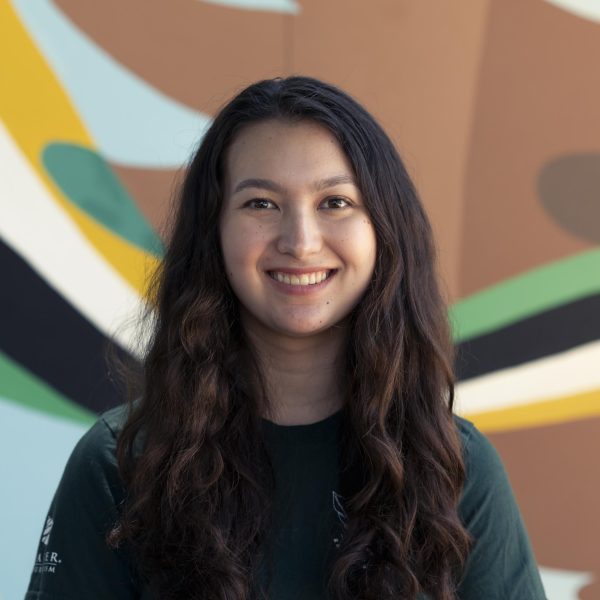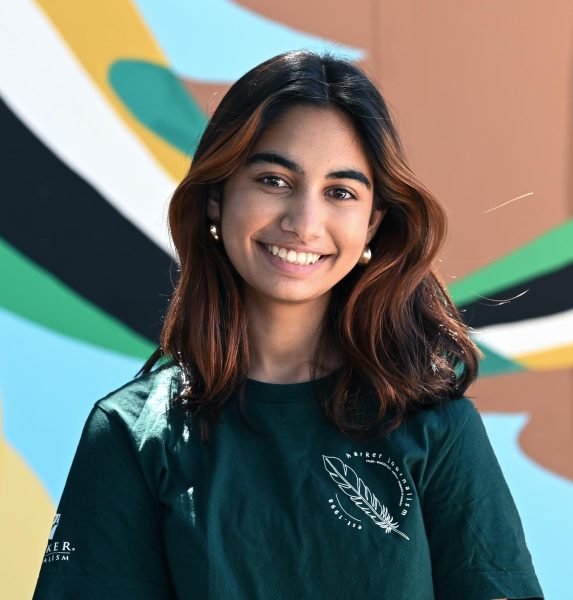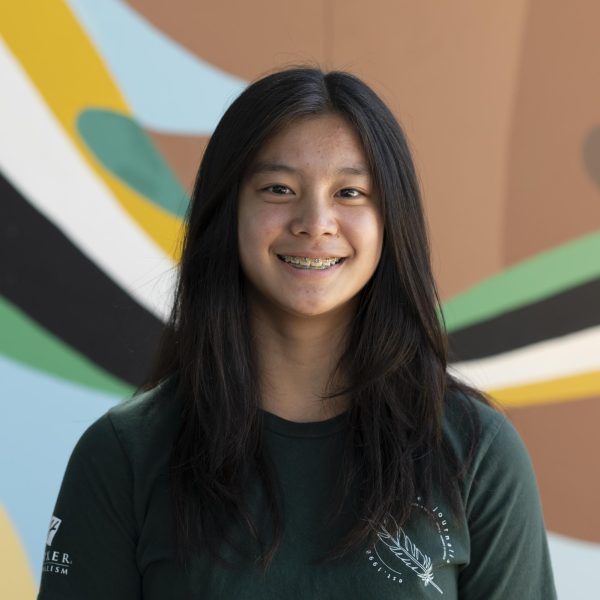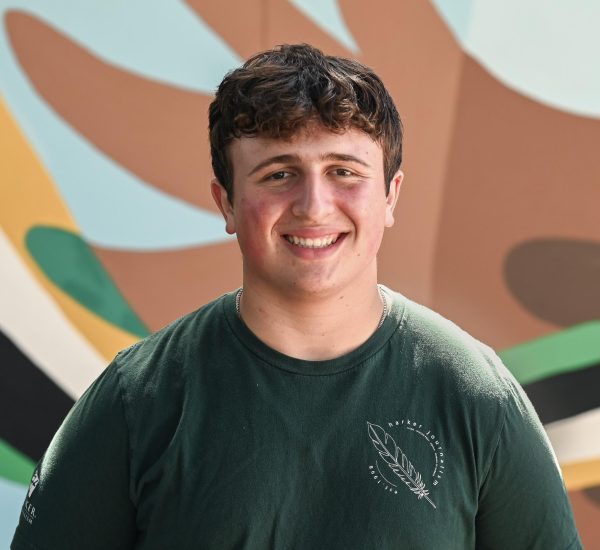PALO ALTO, Calif. – Harker Journalism staff members attended speaker sessions with experienced professionals and fellow high school students in the journalism field to learn how to improve their own journalistic skills and publications at the Journalism Education Association (JEA) Northern California Media Day on Saturday.
Reporters visited several sessions over the course of the day, with topics ranging from how to apply journalism skills to any career to the nuances of international news coverage.
J-ism Is Training for Anything
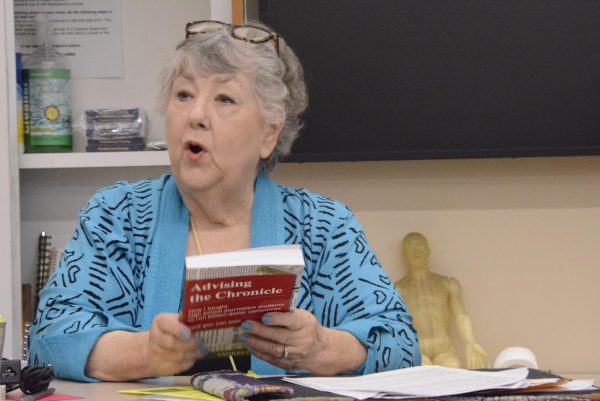
In her workshop, “J-ism Is Training for Anything,” Speaker Kathleen Neumeyer presented on how students can utilize journalism in their varied professional careers.
She served as adviser of the Harvard-Westlake Chronicle for 24 years, and the publication won 13 Gold Crowns, five Pacemakers and varied other student journalism awards under her purview. After retiring from her position in 2015, she came across an article that a former student wrote titled “How my high school journalism teacher taught me to run a billion dollar company” in Fortune. Learning of her impact inspired her to reconnect with former students to explore how their high school journalism training impacted their current professions, a process she described in her book: “Advising the Chronicle: How I taught high school journalism students to run billion-dollar companies (and you can too).”
“There’s never been a time where it’s more important for high school students to learn to evaluate and separate truth from fiction and separate what sources are trustworthy and which ones are not,” Neumeyer said. “Sweating the small stuff is really important in journalism, and it turns out that it’s really important in everything else.”
From Gaza to Donetsk
Freelance Columnist and Stanford Lecturer Dan Sneider and Eastside College Prep Journalism Advisor and former Mercury News Editor Elisabeth Rubenfien discussed how to resolve challenges related to the coverage of international events in high school journalism in their workshop “From Gaza to Donetsk.”
Rubenfien encouraged writers to recognize the effect of their coverage of violence on readers, and to treat readers and sources with respect and consideration. She also noted that readers struggle with maintaining attention on an article and discussed strategies to retain readership. Discussing his own work as a foreign correspondent in Japan, India and the then-Soviet Union, Sneider narrowed in on the issue of balance in reporting, and how publications can maintain neutrality in controversial conflict.
“Conflict is always going on, either conflict of a domestic nature or conflict of an international nature,” Sneider said. “The challenge is how do you make that conflict understandable, how do you make it relatable to people who are distant to that conflict and how do you deal with the complicated issues of balance.”
Video Journalism
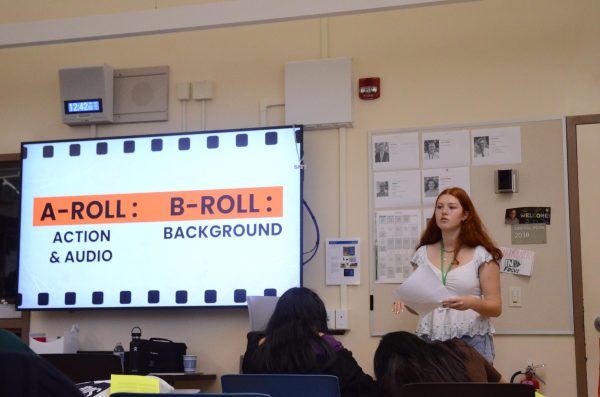
In the Intro to Video Storytelling workshop, InFocus staff members Aneesh Tiwari and Claire Antonow talked about how to create engaging and informative video packages. InFocus serves as Palo Alto High School’s student broadcast TV station.
Aneesh and Claire explained the process of producing video packages, focusing mainly on developing ideas, interviewing sources, filming different kinds of footage and editing cohesively. They noted the importance of prioritizing clarity while storytelling, especially through the video medium.
“You want to keep it more casual,” Aneesh said. “When I’m reading an article, if I don’t really understand a sentence, I can just go back. But if I’m watching the news, I’m probably not going to be rewinding 10 seconds to hear again what they say. You really want to keep it clear and concise and digestible.”
Upping Your Sports Game
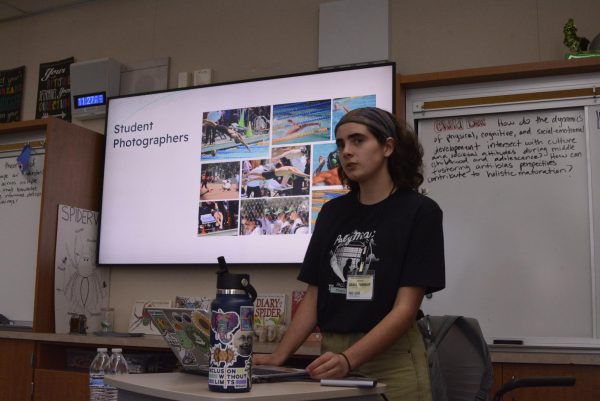
Grace Gormley, an editor-in-chief of Viking, Palo Alto High School’s sports-only publication, broke down Viking’s approach to sports coverage. Founded in 2008, Viking stands as the nation’s only high school sports magazine.
Apart from “beats,” or brief game recaps of all home games, Gormley divided Viking’s coverage into three categories: community-focused, which promotes engagement, problem, which tends to tie sports into larger issues, and news content. Gormley also emphasized the importance of encouraging sports photography across publications.
“It’s interesting to think about what aspects of athletics we don’t cover in other publications at [Palo Alto High School],” Gormley said. “Viking does the work of going a bit deeper into that.”
Co-Arts & Entertainment/Lifestyle Editor Alison Yang (11) attended Gormley’s session. Alison commented on how helpful it is to see inside another publication and take inspiration from their process.
“My favorite part of the session was when she went in-depth about the different types of articles in Viking,” Alison said. “It was interesting to see how they differentiated them and to see their process from ideation to interviews to putting [articles] together in layout. I’ll definitely be keeping that in mind going forward.”


















![“[Building nerf blasters] became this outlet of creativity for me that hasn't been matched by anything else. The process [of] making a build complete to your desire is such a painstakingly difficult process, but I've had to learn from [the skills needed from] soldering to proper painting. There's so many different options for everything, if you think about it, it exists. The best part is [that] if it doesn't exist, you can build it yourself," Ishaan Parate said.](https://harkeraquila.com/wp-content/uploads/2022/08/DSC_8149-900x604.jpg)




![“When I came into high school, I was ready to be a follower. But DECA was a game changer for me. It helped me overcome my fear of public speaking, and it's played such a major role in who I've become today. To be able to successfully lead a chapter of 150 students, an officer team and be one of the upperclassmen I once really admired is something I'm [really] proud of,” Anvitha Tummala ('21) said.](https://harkeraquila.com/wp-content/uploads/2021/07/Screen-Shot-2021-07-25-at-9.50.05-AM-900x594.png)







![“I think getting up in the morning and having a sense of purpose [is exciting]. I think without a certain amount of drive, life is kind of obsolete and mundane, and I think having that every single day is what makes each day unique and kind of makes life exciting,” Neymika Jain (12) said.](https://harkeraquila.com/wp-content/uploads/2017/06/Screen-Shot-2017-06-03-at-4.54.16-PM.png)








![“My slogan is ‘slow feet, don’t eat, and I’m hungry.’ You need to run fast to get where you are–you aren't going to get those championships if you aren't fast,” Angel Cervantes (12) said. “I want to do well in school on my tests and in track and win championships for my team. I live by that, [and] I can do that anywhere: in the classroom or on the field.”](https://harkeraquila.com/wp-content/uploads/2018/06/DSC5146-900x601.jpg)
![“[Volleyball has] taught me how to fall correctly, and another thing it taught is that you don’t have to be the best at something to be good at it. If you just hit the ball in a smart way, then it still scores points and you’re good at it. You could be a background player and still make a much bigger impact on the team than you would think,” Anya Gert (’20) said.](https://harkeraquila.com/wp-content/uploads/2020/06/AnnaGert_JinTuan_HoHPhotoEdited-600x900.jpeg)

![“I'm not nearly there yet, but [my confidence has] definitely been getting better since I was pretty shy and timid coming into Harker my freshman year. I know that there's a lot of people that are really confident in what they do, and I really admire them. Everyone's so driven and that has really pushed me to kind of try to find my own place in high school and be more confident,” Alyssa Huang (’20) said.](https://harkeraquila.com/wp-content/uploads/2020/06/AlyssaHuang_EmilyChen_HoHPhoto-900x749.jpeg)





![LALC Vice President of External Affairs Raeanne Li (11) explains the International Phonetic Alphabet to attendees. "We decided to have more fun topics this year instead of just talking about the same things every year so our older members can also [enjoy],” Raeanne said.](https://harkeraquila.com/wp-content/uploads/2025/10/DSC_4627-1200x795.jpg)

